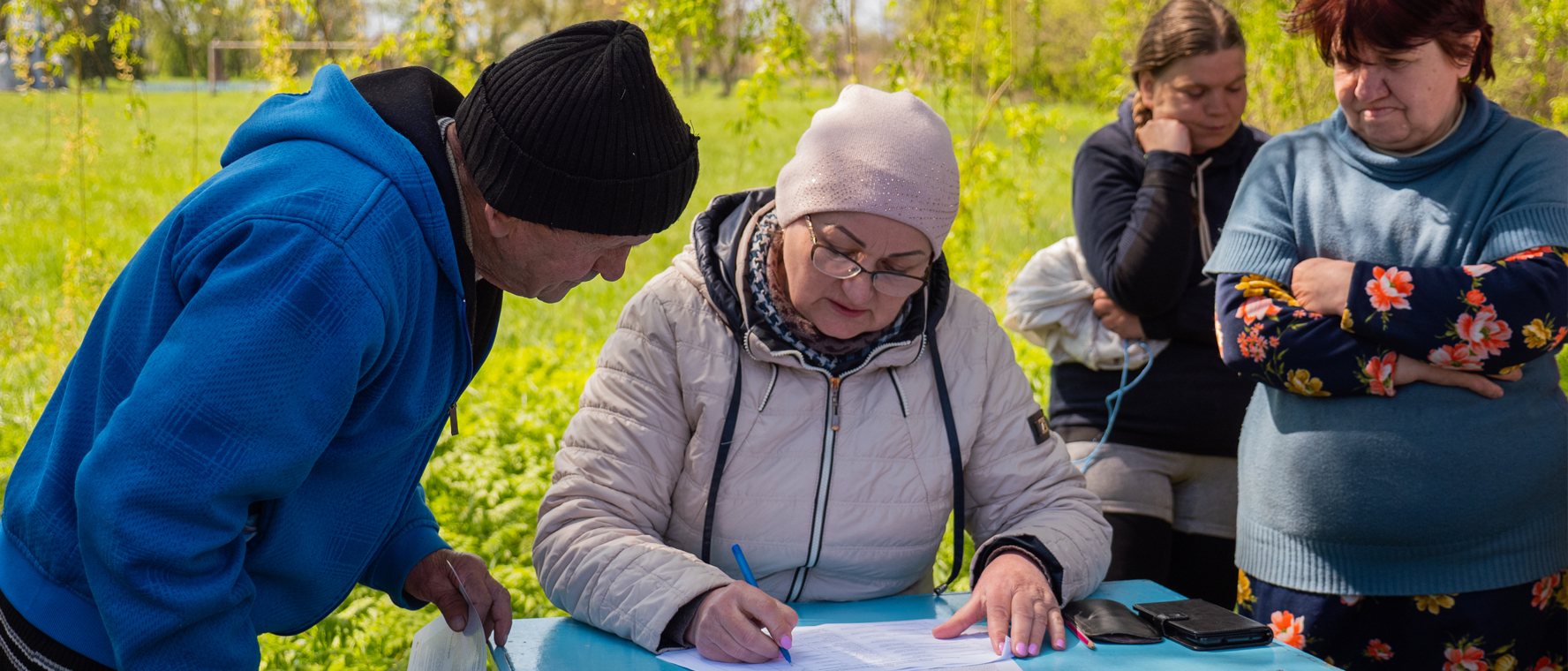
Gender-sensitive social protection
Social protection is an effective means to reduce poverty, enhance food security and foster rural development. It includes social assistance, social insurance and labour market interventions. Investments in social protection can support rural populations’ access to health care and education, ensure adequate dietary intake, provide basic income security and progressively higher levels of protection from crises, shocks and stressors, and facilitate engagement in decent and productive employment.
Rural women and girls play an important role in agrifood systems, yet they are more likely than men and boys to be food insecure and undernourished. Rural women often face gender-related barriers to participate in and benefit equally from social protection, such as unequal care burden, lack of services or infrastructure, illiteracy and limited access to information. Furthermore, rural women may not be able to use and benefit equally from social transfers due to weak bargaining power and intrahousehold dynamics.
Well-designed social protection measures can reduce gender gaps in access to services, such as health and education. They can also reduce the gap in productive resources and decision-making. Cash or in-kind transfers and public works programmes can boost women’s social status, increase their financial autonomy, enable their asset accumulation and enhance women’s resilience. However, women’s economic advancement does not self-evidently lead to empowerment. Social protection schemes need to be designed, implemented and monitored based on a clear understanding of the specific risks and constraints faced by women so that adjustments can be made to ensure they benefit equally from those schemes.
The Food and Agriculture Organization of the United Nations (FAO) works to inform the design of gender-sensitive social protection interventions by, for instance, conducting quantitative analysis to assess the role of social protection on rural households’ well-being, women’s empowerment and decision-making, dietary diversity and economic empowerment. FAO has also prepared capacity development materials to enhance the technical capacity of social protection practitioners to integrate gender issues in the design, delivery, monitoring and evaluation of social protection programmes in rural areas. Additionally, FAO is developing guidance on gender in risk-informed and shock-responsive social protection.
- Social protection is an effective strategy for reducing rural poverty and vulnerability and for promoting productive investment.
- Well-designed social protection measures can reduce gender gaps in access to health and education, productive resources, and decision-making and contribute to gender equality and rural women’s empowerment.
- Conduct a gender-sensitive poverty and vulnerability assessment to inform the design and implementation of all social protection programming, particularly around programme objectives, targeting, transfer size and frequency.
- Targeting should be based on evidence rather than assumptions. To address gender inequalities, programming needs to include elements such as sensitization of men and boys and provide access to additional services relevant to rural women.
- Include both quotas for women and complementary measures, such as flexible and decent work conditions and childcare services in public works programmes. These should ensure equal pay for equal work, and zero tolerance for harassment and discrimination.
- Leverage the monitoring and evaluation of programmes to assess the extent to which they are meeting their gender-equality objectives and identify any necessary adjustments to improve performance and outcomes.
- Train implementing staff on gender issues and ensure that grievance mechanisms are accessible to and understood by all trainees.
In Somalia, the FAO Cash for Work (CFW) programme is addressing the needs of pregnant and lactating women and facilitating flexibility in work scheduling and decent work conditions to ensure that women’s participation does not add to their work burden.
In Iraq, a FAO CFW programme has improved women’s status through the development of backyard poultry farming for consumption and income generation.
In Guatemala, FAO initiated the Community Contingency Funds to build the resilience of households. The programme is also building women’s financial literacy, leadership skills and capacities to respond to extreme climatic conditions. A total of 1098 beneficiary families, members of 22 formal and informal farmer associations, benefited from this initiative. Most of the association’s members were women, who played a key role in the sustainability of the Funds by ensuring that saving payments were duly paid.
In Paraguay, FAO contributed to a study on rural women’s economic empowerment as part of a national policy process, whereby the country launched a new social protection strategy and developed a national plan for poverty alleviation. A key pillar of the strategy was promoting the economic inclusion of rural populations, particularly women.
FAO generates evidence on the impacts of social protection as a core component of combined interventions (Cash Plus). In Ethiopia, FAO assessed the impacts of an intervention seeking to strengthen women’s empowerment in the context of the country’s Productive Safety Net Programme. A similar study is ongoing in Lesotho regarding a Cash Plus intervention.
- FAO. 2015. The impact of cash transfers on the economic advancement and decision-making capacity of rural women. Policy Brief. Rome, FAO.
- FAO. 2018. Technical Guide 1 of Toolkit on Gender-sensitive social protection to combat rural poverty and hunger: Introduction to gender-sensitive social protection programming to combat rural poverty: Why is it important and what does it mean? Rome, FAO.
- FAO. 2018. Technical Guide 2 of Toolkit on Gender-sensitive social protection to combat rural poverty and hunger: A guide to integrating gender into the design of cash transfer and public work programmes. Rome, FAO.
- FAO. 2018. Technical Guide 3 of Toolkit on Gender-sensitive social protection to combat rural poverty and hunger: Integrating gender into implementation and monitoring and evaluation of cash transfer and public works programmes. Rome, FAO.
- FAO. 2017. Cash and productive transfers for women in the Sahel. 17/3/2017 Rome, FAO.
- FAO. 2017. FAO CASH+ programme boosts the livelihoods of women and vulnerable households in Mali. 17/5/2017. Rome, FAO.
- Pavanello, S., Pozarny, P., De la O Campos, A.P. & Warring, N. 2016. Research on rural women’s economic empowerment and social protection – The impacts of Rwanda’s Vision 2020 Umurenge Programme (VUP). PtoP project report. Rome, FAO.
